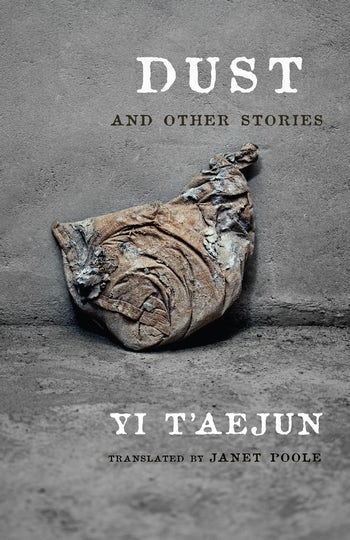Caitlin Hurst and Ada Smailbegović on Poetics of Liveliness (Part 1)

Ada Smailbegović’s new book Poetics of Liveliness investigates the ways twentieth- and twenty-first-century poets have intermingled scientific methodologies with poetic form to reveal unfolding processes of change. The book shifts across scales to describe the subtly changing realms of molecules, fibers, tissues, and clouds. It explores works such as Christian Bök’s insertion of a poetic text into the DNA code of living bacteria in order to generate a new poem in the shape of a protein molecule, Jen Bervin’s considerations of silk fibers and their use in biomedicine, Gertrude Stein’s examination of brain tissues in medical school and its subsequent influence on her literary taxonomies of character, and Lisa Robertson’s studies of nineteenth-century meteorology and the soft architecture of clouds.
In this two-part conversation, Smailbegović talks with our own Caitlin Hurst about how her work thinks through the relationship between poetry and science, guided by its interest in questions of “liveliness,” soft matter, and nonhuman perception. This interview has been edited for length and clarity.
Caitlin Hurst: Congratulations on the publication of Poetics of Liveliness. Can you tell me more about the origins of the project? At the beginning of the book, you mention that fieldwork observation of harbor seals as an undergraduate student in biology was an important early seed for the ideas you’re thinking through. Near the end, you reveal you’re a practicing poet and discuss your poetic experiment for the magazine Triple Canopy, an attempt to replicate Francis Bacon’s experiments in his History of Dense and Rare that included you watching a slice of lemon turn moldy. What do cut lemons, seal-watching, and seventeenth-century philosophers have to do with the questions that interest you in contemporary poetry?
Ada Smailbegović: In some ways, I actually see a great continuity between the kinds of questions that I began asking as a student of biology and what I’m doing in the present. As a student of biology I was really interested in observation and description in particular. This came up for me in a class about moss, where we had to create a moss collection, and the class involved a lot of fieldwork in the forest gathering moss and then coming back to the lab and looking at moss through a microscope. I was supposed to classify the moss samples, but sometimes I actually wanted the process to go beyond that. I wanted to keep on describing them. When I think back on that time now, one part that’s coming up for me is these structures called elaters, which sometimes exist in nonvascular plants, such as liverworts. Basically, what elaters do is that they have these strange ribbonlike structures wrapped around in a helical way and they change their shape depending on the changes in the moisture of the air. And so changes in humidity cause the elater to flicker and kind of move around in space, which helps the spores distribute themselves. But I think I found something so beautiful about the green and golden ribbonlike structures that I saw through the lens of the microscope that I wanted to keep on thinking about them and keep on describing them. And I think that’s maybe where a poetic impulse comes in, where there’s a desire for excess of description, and maybe in Gertrude Stein’s terms, a kind of beginning again, and again, a kind of return to the object and the moment of description.
I also think that my training in biology taught me a lot about nonhuman temporalities and I think that there’s a strand of the book that’s really interested in the minuteness of nonhuman perception, whether that involves perception in terms of spatial scales or temporal ones. In Micrographia, an early microscopy text from the seventeenth century, Robert Hooke observes the edge of a razor and basically says, “Oh, no, it’s full of craters and crevices and it’s not just a perfectly slick, sharp thing that we observe at the human scale. And in fact, it’s populated by a whole world of miniature mites!” And so I think that there’s almost a kind of horror or anxiety about a world that opens up into these microcosms. But I think that there is something fascinating about nonhuman perception and the way that nonhuman creatures sense the edges of the world differently than humans do, but also sense the edges of time differently. I think some of that thinking started for me really early in studying biology. And I think that the seal project that you bring up was sort of instrumental for that, because as part of doing an honors thesis I was tasked with looking for seals in various locations, including islands off the west coast of Canada. But I did not quite know where to find the seals, so there was a lot of sadness that year. I spent about 14 months looking for the seals, and I would go to an island and then I wouldn’t be able to find them, or I wouldn’t be able to get to the waterfront because of private property blocking access to the coastline. And then sometimes I would be sitting on these rocks for hours and the seals wouldn’t appear. And I think maybe in the world that we live in, which is shaped by more instrumental temporalities of capitalism, there is pressure for time to operate according to human demands and at human speed. I think that there was something really instructive for me about being in spaces where I was waiting and my temporality was suspended and my human desires were potentially thwarted, or where there was a sense of uncertainty or indeterminacy about whether an encounter would happen. I think that was the beginning of my thinking about nonhuman temporality and I think that comes up in the book through the concept of snail time.
Hurst: I like the way you’re talking about the experience of the seal study creating a sense of nonhuman temporality and patience. Literary criticism on modernism in particular is often about speed, about a preoccupation of modernist writers with registering the speed of human consciousness. So I thought a really cool thing about your project, in its view of certain modernist antecedents of contemporary poetics, is an interest in slowness and nonhuman temporalities. Even when the book brings in someone like the futurist Marinetti, a poet closely associated with speed and machines, you attend to his desire for a poetic language capable of reaching into infinitesimally small scales of plant and animal life happening around us, right down to a capacity for expressing a sense of the molecular or atomic levels of life. Your book opening up poetry to nonhuman temporalities gave me a different sense of modernism.
Smailbegović: I’m really struck by what you are saying about modernism. As you were speaking, I was feeling that you were defining what I mean by the term liveliness, or what I think is at the heart of that term, which has something to do with the rhythm of the material world and the rhythm of language and how these rhythms can parallel one another. In defining liveliness there is a concern for me with pace, maybe not only speed, but a differentiation of rhythm. I’m really interested in the sense of materiality as rhythmic so that the matter is never completely solid; instead, matter is always infused with temporality, always rhythmic, always undergoing minute processes of change, forming and reforming what I would call soft entities. I’m also interested in ways in which language can register these processes of change. For instance, in Jen Bervin’s book Silk Poems, the poem is written from a perspective of a silkworm and it follows the silkworm’s life cycle, which contains many moments of minute transformation, and leads eventually to a major moment of metamorphosis in which a silk moth emerges from her cocoon. In reading the book one is caught up inside of a temporal cycle of a nonhuman organism, and the form of the poem attempts to mimic these nonhuman temporal rhythms.
Hurst: Speaking of Bervin’s Silk Poems, I wanted to ask you about anthropomorphism, or the way you approach what could be considered strategic anthropomorphism. What might we gain from “risking” a little anthropomorphism? Bervin is writing from the perspective of a silkworm. And, reading the bits of the poem that you quote in the book, it is a very strange perspective to read through. There’s a lot of eating of mulberries. Or mulberry leaves, rather. It made me want to eat a mulberry leaf. I’m curious about your sense of reading as an unusual embodied experience in Silk Poems. It seems like poetry is especially conducive to thinking through a link between reading and the body. I mean, it’s always been connected with (the human) voice and ear and breath. There’s a moment in the poem when the silkworm paraphrases Nabokov suggesting we can read with our spines. And the silkworm says something like, I read with my breathing. Here we might extend your earlier discussion of nonhuman temporalities into other forms of sensing.
Smailbegović: This makes me think about Charles Olson’s “Projective Verse” an essay in which he is really interested in how the page of a poem can somehow score both breath and other elements of embodied experience, especially through the use of the typewriter and how the typewriter creates a gridded space, which structures the page in some way metrically and through this records the rhythms of the body and the breath and transmits them to the reader. For Olson there is a kind of transfer of energy between the poet’s body and the reader’s body conveyed through the structuring of the page. Something interests me about these bodily transmissions…
Hurst: And Bervin is kind of doing that for a silkworm?
Smailbegović: Yes, exactly! Another essay by Olson that’s really cool is called “Proprioception.” In it, he explicitly talks about the rhythms of the organism and the organism’s tissues. It’s quite biologically informed. And proprioception, of course, entails the way that the body feels or senses itself in space. I think that there’s a desire in Silk Poems to transmit that sense of embodiment through the poem. And, as you point out, Bervin is doing that with a nonhuman organism, a silkworm. One of the ways this actually happens is through the typographic setting of the poem, which is in all capital letters in its printed version. All the letters are pressed together, there’s no spacing between the words and so the reader at first has a really hard time parsing the poem, and being able to distinguish individual words. And then, I find, as you keep on reading the poem, you get better at it, and you start to distinguish the words but there’s also this flicker of sense sometimes where the words could be fused differently, or they could be parsed differently, and multiple words kind of begin to appear in the text in almost the same space. It feels almost a bit mystical or hallucinogenic to have that experience of the text, but I think what Bervin is partly doing there is thinking about the textural experience of a silkworm, taking small bites out of a mulberry leaf as a series of consecutive bites without interruption. And so in some ways, she wants the reader’s body, in reading the poem, to have a textural experience of what it would be like to navigate the surface of the leaf and to be actually eating the leaf.
Read Part 2 of the conversation here.





